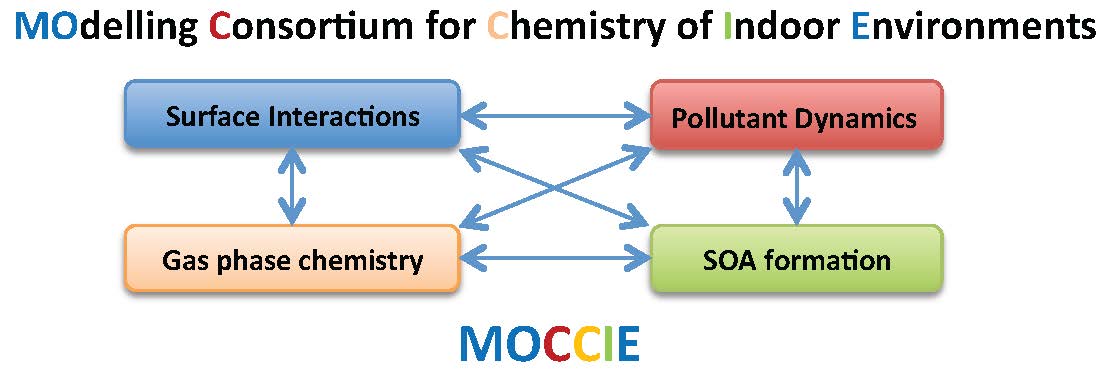Welcome to the MOCCIE website!
People in developed countries are estimated to spend 90% of
their time indoors whether at home, at work, or commuting between the
two. Consequently, our exposure to air pollutants happens mainly
indoors despite regulations focusing on outdoor air quality. Many
pollutants exist indoors through activities such as cooking, cleaning
and home improvements. In addition, outdoor pollutants make their way
indoors through windows and doors, as well as the building fabric.
These pollutants can then undergo a number of chemical and physical
transformations, leading to the formation of a myriad of different
secondary products. Many of the products formed are chemically complex
and difficult to measure experimentally. Also, given the wide variety
of locations, building types and operating conditions, measurements
made in one place are not necessarily representative for others. Our
best way of understanding indoor air chemistry is therefore through
modelling. Ideally, this would involve using a model that encompassed
all aspects of indoor air chemistry.
MOCCIE is a modeling consortium for chemistry of indoor environments. It is funded by the Alfred P. Sloan foundation within the Chemistry of Indoor Environments (CIE) Program. The project starts in July 2017 and continues for two years. This 2-year project will bring together modelling experts from a number of different fields to begin to develop comprehensive, integrated physical-chemical models that include a realistic representation of gas-phase, aerosol-phase and surface chemistry in indoor environments and how occupants, indoor activities and buildings influence indoor processes. It will also lay the foundations for an eventual integrated model for indoor air chemistry. Such a model could then be used to predict when indoor air chemistry processes might cause harm to human health and wellbeing.

News
| 07/20 - 21 / 2017 |
MOCCIE kick-off meeting to be held at UC Irvine. |
| 07/01/2017 |
Official start of MOCCIE! |
| 06/13/2017 |
MOCCIE got funded by the Sloan
foundation. |